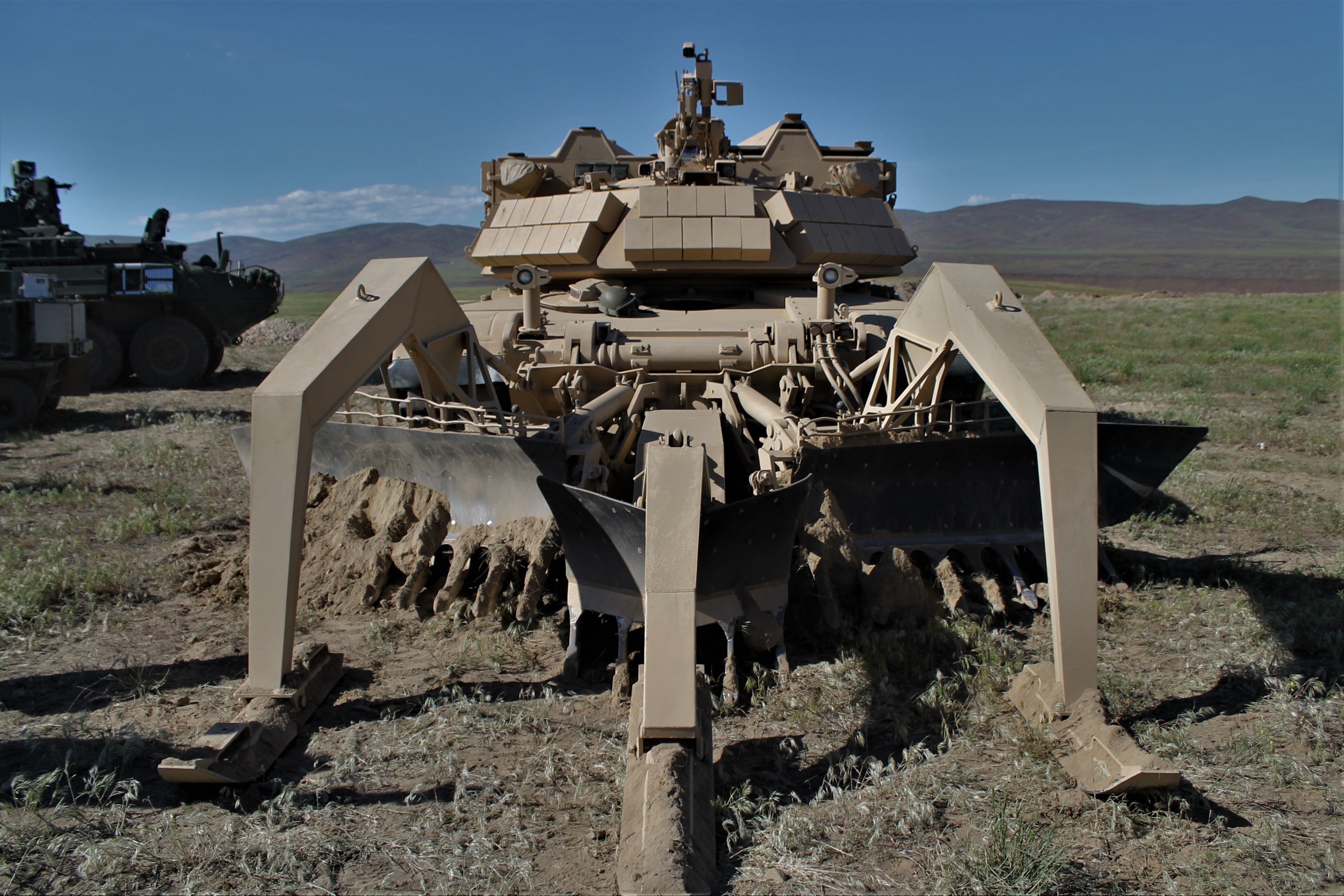WASHINGTON — The U.S. Army is preparing to enter into programs of record for light- and medium-class robotic combat vehicles in a few years, with plans to award separate contracts for a lead systems integrator for each program, according to the service’s robotic combat vehicles product manager.
The service wants to field a light, medium and heavy robotic combat vehicle, and it is experimenting with technology and how the vehicles might fit into future formations through the Army’s Next-Generation Combat Vehicle modernization office. Developing NGCV capability is the second-highest priority for the Army.
The plan is to make a decision to move the Army’s RCV-Light out of technical maturation and into the engineering and manufacturing development phase in the second quarter of fiscal 2023. The service would do the same with the RCV-Medium program in FY24, Lt. Col. Chris Orlowski said Sept. 10 during a conference hosted by the Association for Unmanned Vehicle Systems International.
Orlowski noted that the potential RCV-Heavy program of record would fall behind the start of the medium and light programs by “a pretty significant margin.”
At the same conference during a separate keynote presentation, Bruce Jette, the Army’s acquisition chief, said decisions were made that “put pieces in place that will establish a formal program for robotic systems with the [program manager], not just following the tech base but in fact being the centerpiece for building light and medium systems inside of an architecture that fits within the entire operational vehicle architecture. In fact, it will leap over into the aircraft as well. It will be everything from driving to operations of the vehicle to visual sensing to probably a broader array of technical capabilities that you may not have even thought possible.”
The Army plans to award a contract to a lead systems integrator that will combine the RCV’s control station, network, platform, software and payloads, Orlowski said.
Anticipated government-furnished equipment for the programs would include autonomy software, radios, war-fighter machine interface software, aided target recognition software and lethality payloads “minus the turret,” according to Orlowski.
Other potential government-furnished equipment could be a tethered drone; assured position, navigation and timing technology; hostile fire detection; and other vehicle protection systems, he said.
As the Army ventures into developing robotic vehicles that don’t just do the dull, dirty and dangerous work, “the biggest thing is going to be software development, improving autonomous and automation software,” he added.
“Teleoperation is nice; it works OK if you’ve got the right radios and the right environments, but long term, when those environments become tested, I think teleoperation will be less viable and we will have to really push the automation and autonomy on these platforms. But also, that being said, there is always going to have to be some soldier interaction with the platforms. How do we improve that interaction for the soldiers, reducing that cognitive burden?" he said.
“I know everybody likes cool, big, awesome robots, but it’s really a software thing that is going to make these things go, so anything that is kind of tied to software I think is a critical technology in my view,” he added.
RELATED

The Army’s rough acquisition strategy for the robots calls for a first unit to receive RCV-Light vehicles in FY28 and a first unit to receive RCV-Medium in FY30, according to a slide from Orlowski’s conference presentation.
The Army recently wrapped up its first phase of experimentation with RCV-Heavy surrogates fashioned out of M113 armored personnel carriers at Camp Red Devil on Fort Carson, Colorado, which added complexity to an ongoing evaluation of the government-developed platforms.
The Army also awarded contracts to a Textron and Howe & Howe team to build an RCV-Medium prototype, and to a QinetiQ North America and Pratt & Miller team to build the lighter version late last year and early this year. Those are being built now.
Orlowski stressed those prototypes are being built “primarily to support future planned experimentation” in FY22 and FY24 and “in support of defining and informing requirements for the RCV program of record.” He added there is no plan to transition any of those systems into any type of limited fielding.
“They are not designed for that. They are designed for a campaign of learning,” he said.
Now that the first major experiment is done, the Army plans to build up to a company-level operation in the first quarter of FY22 at Fort Hood, Texas, with four RCV-Medium and four RCV-Light prototypes.
While the experimentation at Fort Carson with RCV-Heavy was focused on cavalry operations where the robots served more in a scout mission and proved they could be effective in a reconnaissance and security role, the experiment in FY22 will move the robots into more of an attack-and-defend role.

While the Army has to officially complete a critical technology assessment from the Fort Carson experimentation, Orlowski said the autonomy software “needs to improve.”
The experimentation in FY22 will focus on improvements and the Army will work with industry partners to “improve that tether,” he said. “It needs to be robust in contested environments, which we haven’t fully explored yet.”
The service will also need to look at some alternate communications pathways between the control vehicle and the robots. Aided target recognition needs more maturity, Orlowski explained, “especially on the move to support the platforms.”
Anything that reduces the soldier interaction with the platforms will also be incorporated, “and there are other things that soldiers asked for, which when we are ready to release we will. [The ideas from the feedback] were pretty perceptive," he said.
"So how critical that becomes, we will see.”
Jen Judson is an award-winning journalist covering land warfare for Defense News. She has also worked for Politico and Inside Defense. She holds a Master of Science degree in journalism from Boston University and a Bachelor of Arts degree from Kenyon College.






